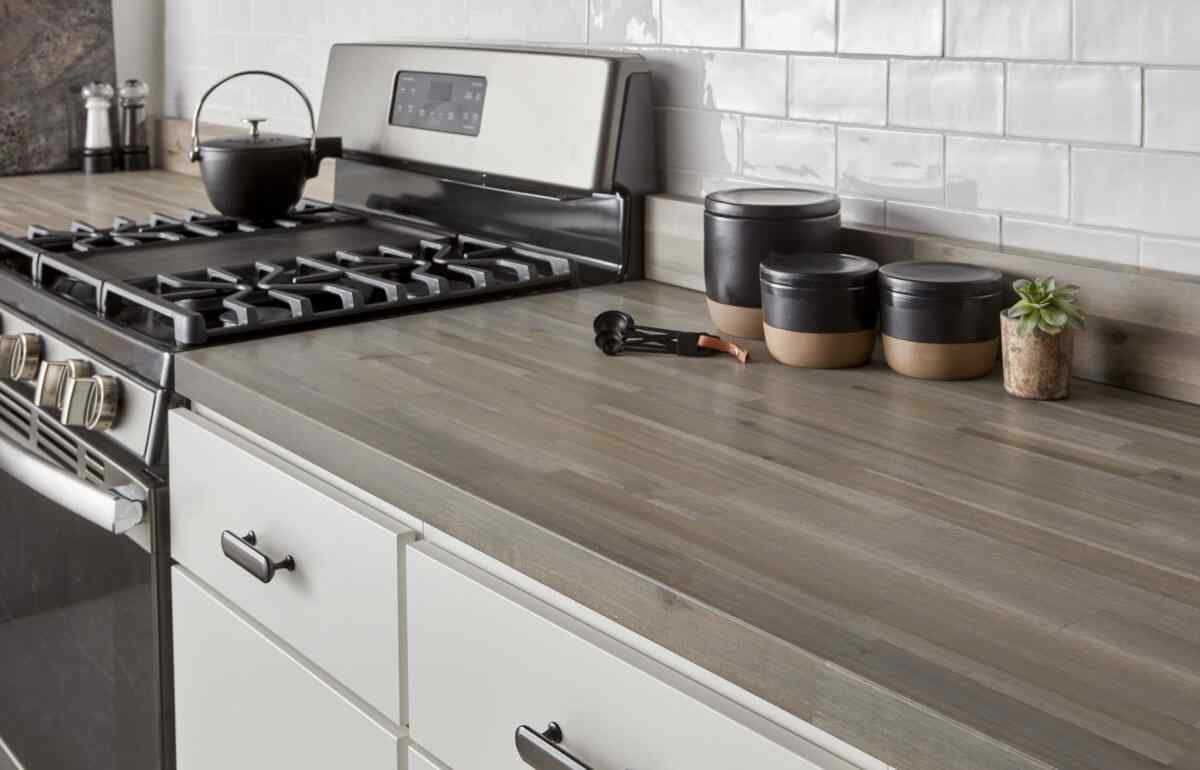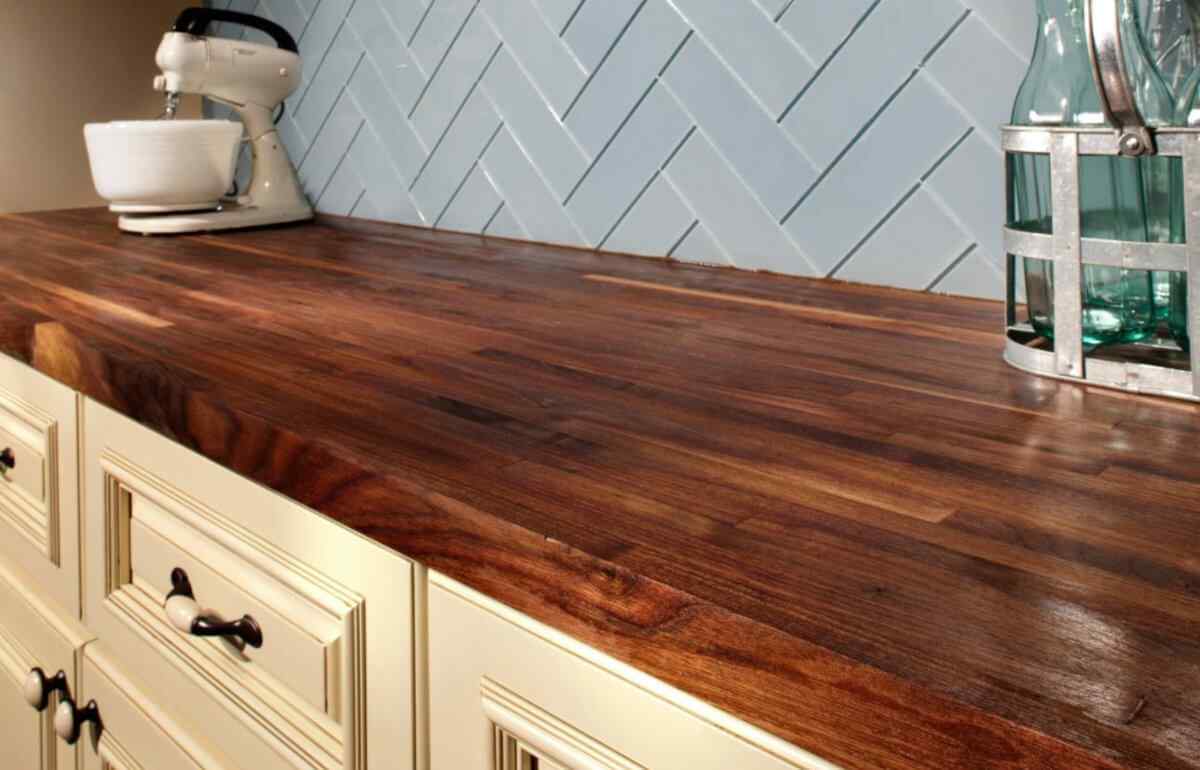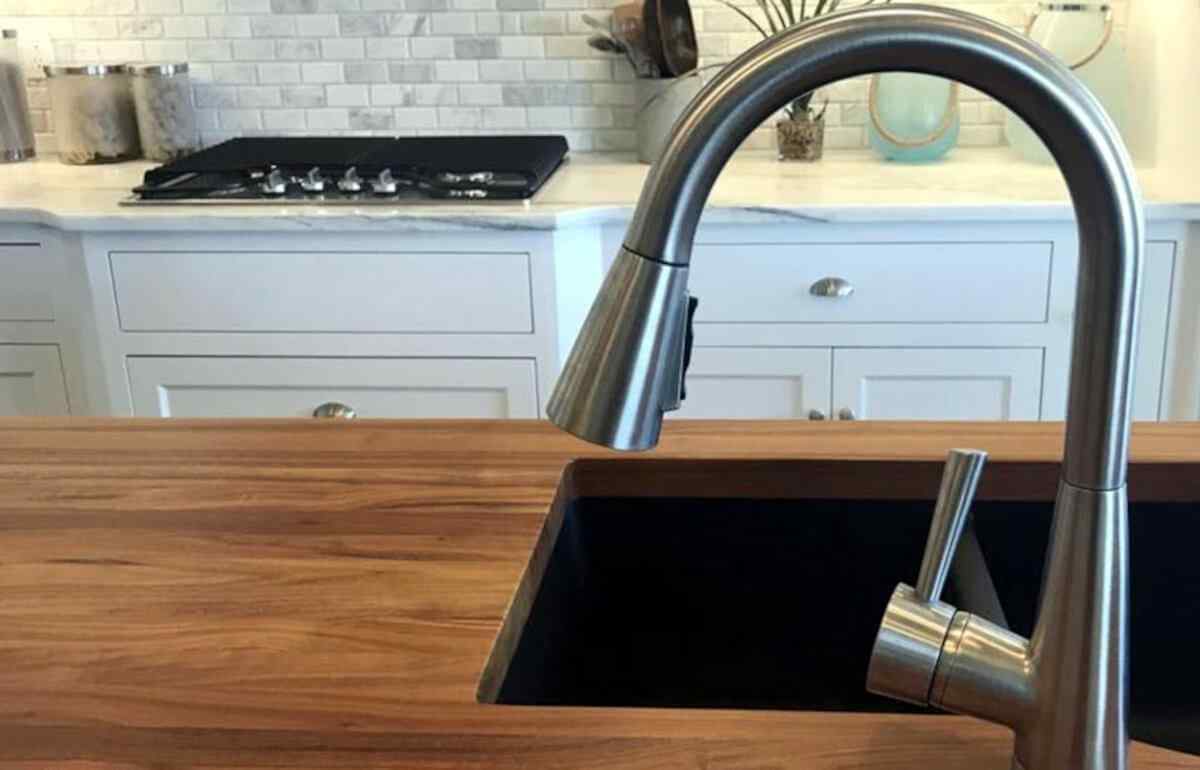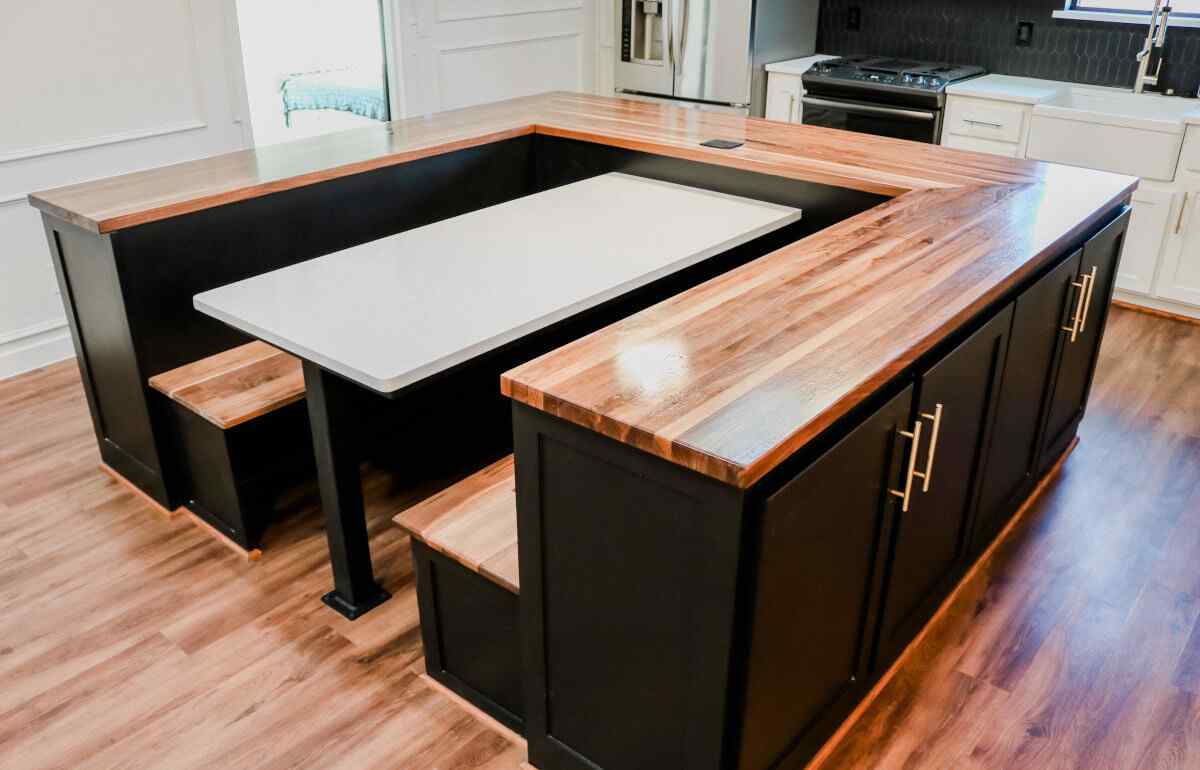Butcher block countertops can be a popular countertop option for homeowners going for a farmhouse style. It can more versatile than “country” because it can come in a variety of woods, designs, and colors. Butcher block countertops remain a solid value for kitchen countertops and unlike Silestone installation can be a DIY project… unless you are a countertop installation professional.

Butcher Block Countertop Design Options
End grain: This uses the end of the wood and is characterized by a checkerboard look.
Face grain: This uses the top of the wood as the countertop. It’s the most visible part of the wood as well as the widest and broadest side.
Edge grain: This is the most popular kind and is characterized by long boards glued together. The boards can vary in length so there aren’t joints or they can be finger-jointed. It’s one of the least expensive options.
Blended grain: This combines interior rails and exterior rails. It will have color variations between light and dark wood. The rails can vary in length and woodshops will create blended grain to reduce waste, which means deals for homeowners.
Various woods can be used: maple, cherry, walnut, and oak are usually used. Bamboo, teak, tigerwood, zebrawood, wenge, beech, hickory and mahogany can be used too.

Positives of Butcher Block Counters
Design Versatility: There are many wood colors and grains to choose from. Also, you can choose from almost any edge style.
Cost: Butcher blocks aren’t as cheap as laminate countertops, but they aren’t as expensive as Silestone countertops. Butcher block is approximately $30 – $40 per square foot, depending upon the type of wood. The labor cost to install a butcher block countertop is $50 – $70 per square foot.
Longevity: It will outlast laminate, but being natural wood, butcher block will last a max of 20 years with regular maintenance. Disregarding trends and fashion, natural stone and Silestone countertops will last much longer.
Cleaning, Care & Maintenance: Like any other surface, use soap, but if you need to disinfect a butcher block kitchen countertop, use vinegar. To remove stains on butcher block, put salt over the stain and rub the spot with half a lemon.
Refinish: Because of nicks or scratches, butcher block countertops will need to be refinished (sand it down with fine-grit sandpaper) and re-oil the surface with food-safe oil.

Negatives of Butcher Block Surfaces
Stains and Scratches: All wood will scratch and stain if not cleaned quickly. Some use butcher block like a cutting board but doing so allows for germs, mold and even warping. To help reduce those issues, butcher block needs to be sealed after installation and at least quarterly. That’s a lot of work compared to Silestone!
Can Dry Out: All wood can dry out. You’ll need to routinely apply food-grade mineral oil to butcher block to prevent it from drying out. Again, a lot of work compared to Silestone’s hard countertop surface.
Not Heat Resistant: Any hot items placed on butcher block can burn the wood. Though it’s performance in this area doesn’t come close to Silestone or even natural surfaces, it can be resurfaced if you want.
Collects Dust: Butcher block surfaces show crumbs and dust more visibly than stone or Silestone counterparts.
Butcher Block Countertop Cost
Butcher block is $30 – $40 per square foot, depending upon the type of wood you choose. The labor cost to install butcher block is $50 – $70 per square foot. High-end butcher blocks can be as high as $200 per square foot. Maple butcher block can cost $80 per square foot, cherry butcher can be $150 per square foot, bamboo runs around $72 per square foot, and teak can be $180 per square foot.

Butcher Block Installation
Like we mentioned previously, installing butcher block countertops can be a DIY project, but wood will expand in summer and contract in winter, so you need to account for that when installing a butcher block. Butcher block will also need to acclimate to your home before you install it to prevent future warping. You might need to shim spots on the cabinets, so the butcher block rests properly.
Top Butcher Block Brands
Created Hardwood: Features live-edge wood slabs.
John Boos & Co: Known for its quality and routines tops the list as one of the top butcher block countertop brands.
Grothouse: Won Houzz design awards in 2019 and 2020, and they also won a service award in 2018.
The Home Depot: Features a number of butcher block brands. Duh!
Craft-Art: High-end manufacturer of butcher block countertops.
IKEA: A good number of butcher block countertops at a reasonable price.
Timeless Timber: Recovers lumber that sank from milling companies more than 100 years ago to give you a unique look.
Butcher Block Countertops & Butcher Block Surfaces – Summary
Butcher block countertops can fit in with most kitchen styles and will last a long time if maintained properly. Like all surfaces, butcher block will cycle as a fad, but beware of its limitations. For its price, it can be a “value” option for kitchen countertops.
